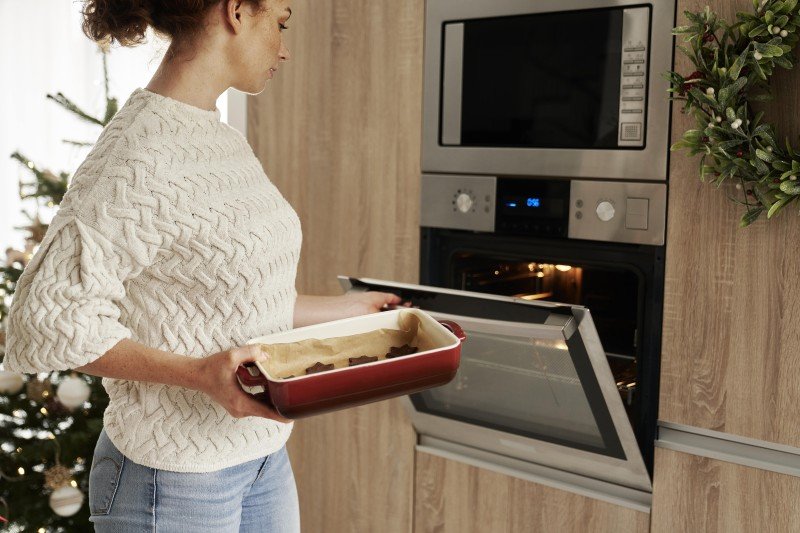The Complete Guide to Ovens and Hobs: Choosing the Right Appliances for Your Kitchen
When it pertains to creating culinary masterpieces, the value of quality kitchen appliances can not be overemphasized. Ovens and hobs are the heart of any kitchen, making it possible for home cooks and professional chefs alike to create, bake, and sauté tasty meals. Understanding the various kinds of ovens and hobs, together with their features and functionalities, is crucial for making informed purchasing decisions. This post offers an in-depth take a look at ovens and hobs, helping you navigate the options available so that you can boost your kitchen's effectiveness and flexibility.
Understanding Ovens
Ovens are vital for cooking and baking and been available in numerous types to satisfy varied culinary needs. Here is an overview of the most common types of ovens:
1. Traditional Ovens
Traditional ovens work by heating the air inside with gas or electric elements. They are perfect for baking cakes, roasting meats, and cooking casseroles.
2. Convection Ovens
These ovens utilize a fan to distribute hot air, supplying an even temperature level throughout, which can significantly reduce cooking times. They are ideal for baking cookies or roasting vegetables.
3. Microwave Ovens
Microwaves cook food rapidly using electro-magnetic radiation. They are perfect for reheating leftovers or defrosting frozen foods but are not ideal for browning or crisping.
4. Wall Ovens
Integrating a wall oven into your kitchen design can conserve space and produce a sleek aesthetic. They function just like conventional or stoves but are built into the wall for easy access.
5. Variety Ovens
These ovens combine stovetop burners with an oven, supplying adaptability for those who prefer a single device for all cooking needs.
| Type | Cooking Method | Best For |
|---|---|---|
| Standard | Electric/Gas | Baking, roasting |
| Convection | Air circulation | Quick cooking, even baking |
| Microwave | Electro-magnetic | Reheating, thawing |
| Wall Ovens | Electric/Gas | Space-saving, sleek style |
| Range Ovens | Electric/Gas | Flexible cooking |
Checking out Hobs
Hobs, also referred to as cooktops or stovetops, offer the surface to prepare pans straight over a heat source. Like ovens, hobs can be found in different types, which can be classified as follows:
1. Gas Hobs
These hobs utilize a flame for cooking and supply instant heat control. They are preferred by many chefs for their responsiveness and accuracy.
2. Electric Hobs
Electric hobs use coils or flat surfaces to heat pans. They use a constant heat source, however they might take longer to cool down compared to gas hobs.
3. Induction Hobs
Induction hobs use electro-magnetic energy to heat pots and pans straight, making them highly effective and much faster to prepare. They are likewise easier to clean as the surface remains relatively cool.
4. Solid Plate Hobs
These are older technology that uses solid metal plates to provide heat. They are durable however are less effective than modern-day choices.
| Type | Heat Source | Benefits | Disadvantages |
|---|---|---|---|
| Gas Hobs | Flame | Immediate heat control | Requires gas connection |
| Electric Hobs | Electric coils | Consistent heat | Slower to cool off |
| Induction Hobs | Electro-magnetic | Fast cooking, energy-efficient | Needs suitable pots and pans |
| Strong Plate Hobs | Solid metal plate | Resilience | Less efficient |
Selecting the Right Appliances
Choosing the best oven and hob for your kitchen includes thinking about various elements:
1. Space and Layout
Step your kitchen location to figure out the size and positioning of the oven and hob. Make sure there is adequate ventilation, particularly for gas devices.
2. Cooking Style
Think about how frequently you cook and the kind of meals you prepare. A convection oven may match avid bakers, while somebody who frequently stir-fries might prefer an induction hob.
3. Energy Source
Pick the energy source that best fits your lifestyle. Gas offers immediate control, while electric and induction hobs offer ease of use and are frequently more energy-efficient.
4. Budget plan
Recognize your spending plan for kitchen home appliances. Ovens and hobs vary significantly in rate, depending upon functions and brand names. Focus on necessary functions that meet your needs.
5. Features
Try to find performances such as self-cleaning alternatives, smart innovation compatibility, specific rack setups for ovens, and security functions for hobs.
Often Asked Questions (FAQs)
Q1: What is the difference between a standard oven and a convection oven?A1: Conventional ovens heat the air inside without fans, while stove make use of a fan to circulate hot air for more even cooking. Q2: Can I utilize aluminum pots and pans on induction hobs?A2: No, induction hobs require ferrous (magnetic )materials like cast iron or stainless-steel to work effectively. Q3: Do gas hobs heat quicker than electric hobs? Buy Oven Online : Yes, gas hobs provide instant heat, making them faster for cooking compared to electric hobs. Q4: Is it safe to use a microwave oven?A4: Yes, when used according to the maker's instructions, microwave are thought about safe for food preparation.
Q5: How frequently need to I clean my oven and hob?A5: For optimum efficiency, clean your oven regularly, especially after spills. Hobs need to be cleaned down after each usage
to prevent accumulation. Ovens and hobs
are vital parts of a fully equipped kitchen. Comprehending the numerous types, their functionalities, and the factors to consider involved in buying
them can drastically enhance cooking experiences. Whether one is a casual home cook or a professional chef, investing time in picking the right home appliances can cause culinary success and complete satisfaction in the kitchen. By focusing on features that line up with your cooking style, energy sources that fit your home, and spending plan factors to consider, you can produce an effective office that inspires culinary creativity.

